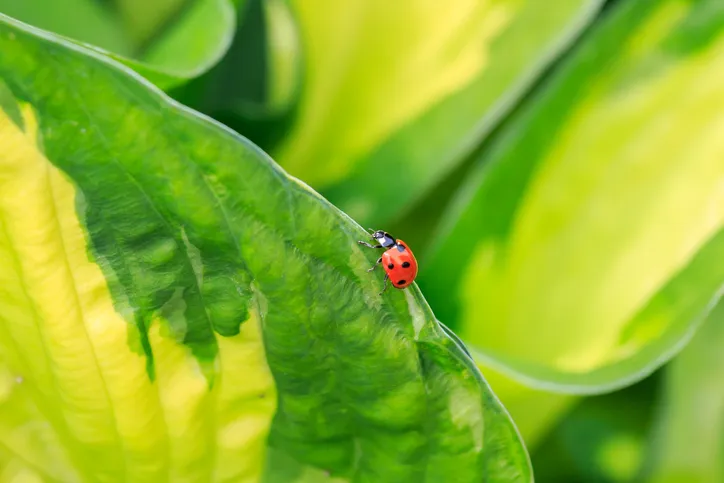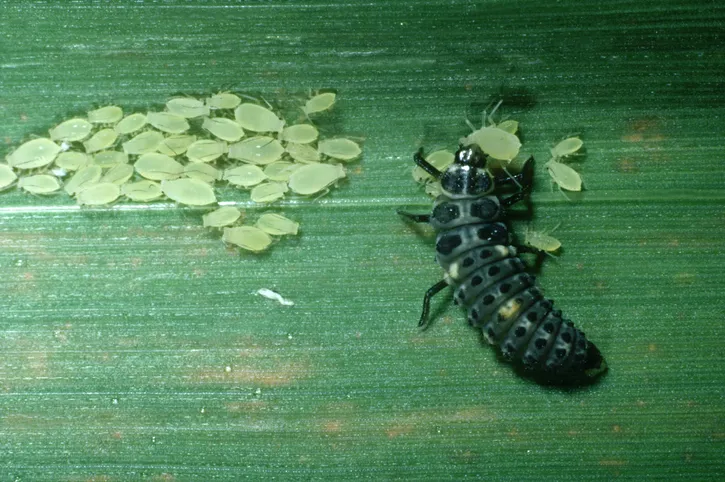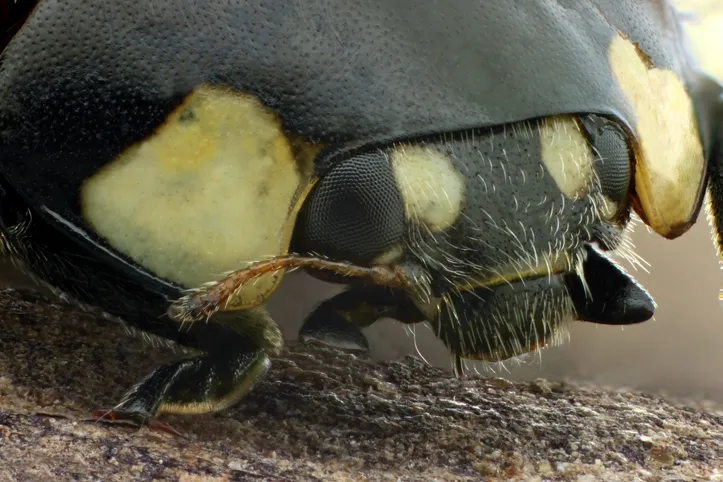Spring warmth wakes up the friend so tiny it can sit on a child's finger. While repainting themselves with fresh grass and early blossom, towns and countryside are suddenly sprinkled with red as if a million scarlet buttons have pinged off a giant's coat. Ladybirds, awake after sheltering all winter in ivy, tree bark and stonework, spread their thin wings, for they are hungry.
But what do they eat? Find out the answers to all your ladybird questions with our expert guide.
- Ladybirds on the landing? Why are they coming indoors?
- How to photograph ladybirds
- Should we should be scared of harlequin ladybirds?

What do ladybirds eat?
We humans love the appetites of ladybirds, especially when they are gorging themselves on aphids. So effective are ladybirds at eating these sap-sucking menaces of garden plants and crops that they have been used for biological control since at least the 19th century.
But they have a certain fame beyond that. Norsemen used ladybirds to predict the harvest, and many other traditions associate them with sunshine and good tidings. The ‘lady’ in their modern name is the Virgin Mary with her red cloak.

Types of ladybird
Not that all the UK’s 46 species are red and black. The cream-spot ladybird, for example, sports chestnut-coloured wing cases splodged with off-white patches, and some other species resemble lemon-halves daubed with a leaky black marker pen.
Garden ladybirds dressed in the traditional colours are likely to be the two-spot or seven-spot species, or the non-native harlequin.

How long do ladybirds live?
Ladybirds live for up to one year. First is the larval stage, which lasts about a month, followed by the pupal stage (about 15 days). They then transform into an adult ladybird, living for up to one year.
Do ladybirds bite?
Ladybirds have biting mouthparts, so they can bite. However, they very rarely bite humans and will only do so if provoked. Bites are harmless to humans, causing no more than a minor irritation.

Are ladybirds poisonous?
The brighest species seem to be the best equipped with defensive toxins; ladybirds wear their colours to warn predators that they are not a meal. Many birds will take the hint, but they do have some enemies, including parasitic wasps and any vocacious specimens of their own kind.
Ladybird eggs are particularly vulnerable to cannibalism. Those that survive hatch into alienesque black-and-orange larvae that - like their parents - set about eating aphids. Come the summer, they retreat into pupae, before emerging with pale wing cases.

Ladybird migration
Ladybird, ladybird, fly away home says the old nursery rhyme, but some travel considerable distances - in warm years, many seven-spot ladybirds from the continent reach southern Britain, a migration that reached quite unfathomable numbers in the hot summer of 1976.
Threats to ladybirds – and how to help them
Despite their abundance, our native ladybirds do have their threats - especially being out-competed and predated upon by the harlequin. A ladybird-friendly garden will avoid pesticides and provide a purpose-built bughouse or two.

